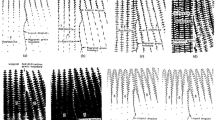Abstract
When welding super duplex stainless steels, a non-admissible pore formation can occur even if recommended processing guidelines are strictly followed. To investigate this phenomenon and to determine the influencing factors, different bead-on-plate welds were produced using gas metal arc welding and submerged arc welding. The welding consumables, the shielding gas, and the welding flux were varied. Additionally, the influences of heat input and interpass temperature were examined. The studies have shown that the shielding gas, the welding flux, and the filler metal have great influence on the pore formation. Even small variations in the chemical composition of the welding consumables lead to different results. In addition, the ferrite number and the chemical composition of the bead-on-plate welds strongly depend on the used shielding gases and filler metals. Furthermore, it became clear that the porosity of the weld metal can be affected by the welding speed.










Similar content being viewed by others
References
EN 10088-2:2014-10, Stainless steels - Part 2: Technical delivery conditions for sheet/plate and strip of corrosion resisting steels for general purposes
prEN ISO 14343:2015-08, Welding consumables - Wire electrodes, strip electrodes, wires and rods for arc welding of stainless and heat resisting steels - Classification (ISO/DIS 14343:2015)
TMR stainless (2014) Practical Guidelines for the Fabrication of Duplex Stainless Steel. 3rd edition 2014, IMOA 1999-2014, London, ISBN 978-1-907470-09-7
DVS-Merkblatt 0946 (2004) Empfehlungen zum Schweißen von nicht rostenden austenitisch-ferritischen Duplex- und Superduplexstählen (engl.: Recommendations for welding austenitic-ferritic duplex and superduplex stainless steels)
Karlsson L (2012) Welding duplex stainless steels - a review Of current recommendations. Welding in the world 56(05/06), pp 65–76. doi:10.1007/BF03321351
Flockerzi PH, Zinke M, Jüttner S (2015) Influencing factors on pore formation in super duplex welds. In: 8th European Stainless Steel & Duplex Stainless Steel Conference 2015. Program (conference transcript), pp 88–97
Bermejo V, Karlsson L, Svensson L-E, Hurtig K, Rasmuson H, Frodigh M, Bengtsson P (2015) Effect of shielding gas on welding performance and properties of duplex and superduplex stainless steel welds. Welding in the World 59(2):239–249
Hoffmeister H, Mundt R (1978) Untersuchungen zum Einfluß der Schweißparameter und der Legierungszusammensetzung auf den Deltaferritgehalt des Schweißguts hochlegierter Chrom-Nickel-Stähle (engl.: Investigations on the influence of welding parameters and alloy composition on the delta-ferrite content of the weld metal of high-alloyed chromium-nickel-steels). Schweißen und Schneiden 30(6):214–218
Arola R, Wendt J, Kivineva E (1999) Gas porosity defects in duplex stainless steel castings. Mater Sci Forum 318-320:297–302
Trevisan RE, Schwemmer DD, Olson DL (1990) The fundamentals of weld metal pore formation. In: Welding: theory and practice, pp 79–115
Otto J, Thier H (1978) Vermeiden von Poren beim Schweißen (engl.: Avoiding pores when welding). In: Schweißen und Schneiden 1978–Fortschritt und Qualität, vol. 50
Avesta Welding (2011) Das Schweißen von rostfreien Duplex-Stählen (engl.: How to weld Duplex Stainless Steel), Information prospect
prEN ISO 10675-1:2015 (D): Non-destructive testing of welds—acceptance levels for radiographic testing–Part 1: Steel, nickel, titanium and their alloys (ISO/DIS 10675–1:2015)
EN ISO 5817:2014 (D): Welding–fusion-welded joints in steel, nickel, titanium and their alloys (beam welding excluded)–Quality levels for imperfections (ISO 5817:2014)
NORSOK standard M-630 (2010) Material data and element data sheets for piping, MDS D52, edition 5, pp 38–39
Acknowledgements
The IGF promotion plan (AiF-No. 18.390 BR / DVS-No. 01.089) of the Research Association on Welding and Allied Processes of the DVS, Aachener Straße 172, 40223 Düsseldorf has been funded by the AiF within the program for sponsorship by Industrial Joint Research (IGF) of the German Federal Ministry of Economic Affairs and Energy based on an enactment of the German Parliament. This support is gratefully appreciated.
Author information
Authors and Affiliations
Corresponding author
Additional information
Recommended for publication by Commission XII - Arc Welding Processes and Production Systems
An erratum to this article is available at http://dx.doi.org/10.1007/s40194-017-0443-z.
Rights and permissions
About this article
Cite this article
Stützer, J., Zinke, M. & Jüttner, S. Studies on the pore formation in super duplex stainless steel welds. Weld World 61, 351–359 (2017). https://doi.org/10.1007/s40194-016-0409-6
Received:
Accepted:
Published:
Issue Date:
DOI: https://doi.org/10.1007/s40194-016-0409-6




